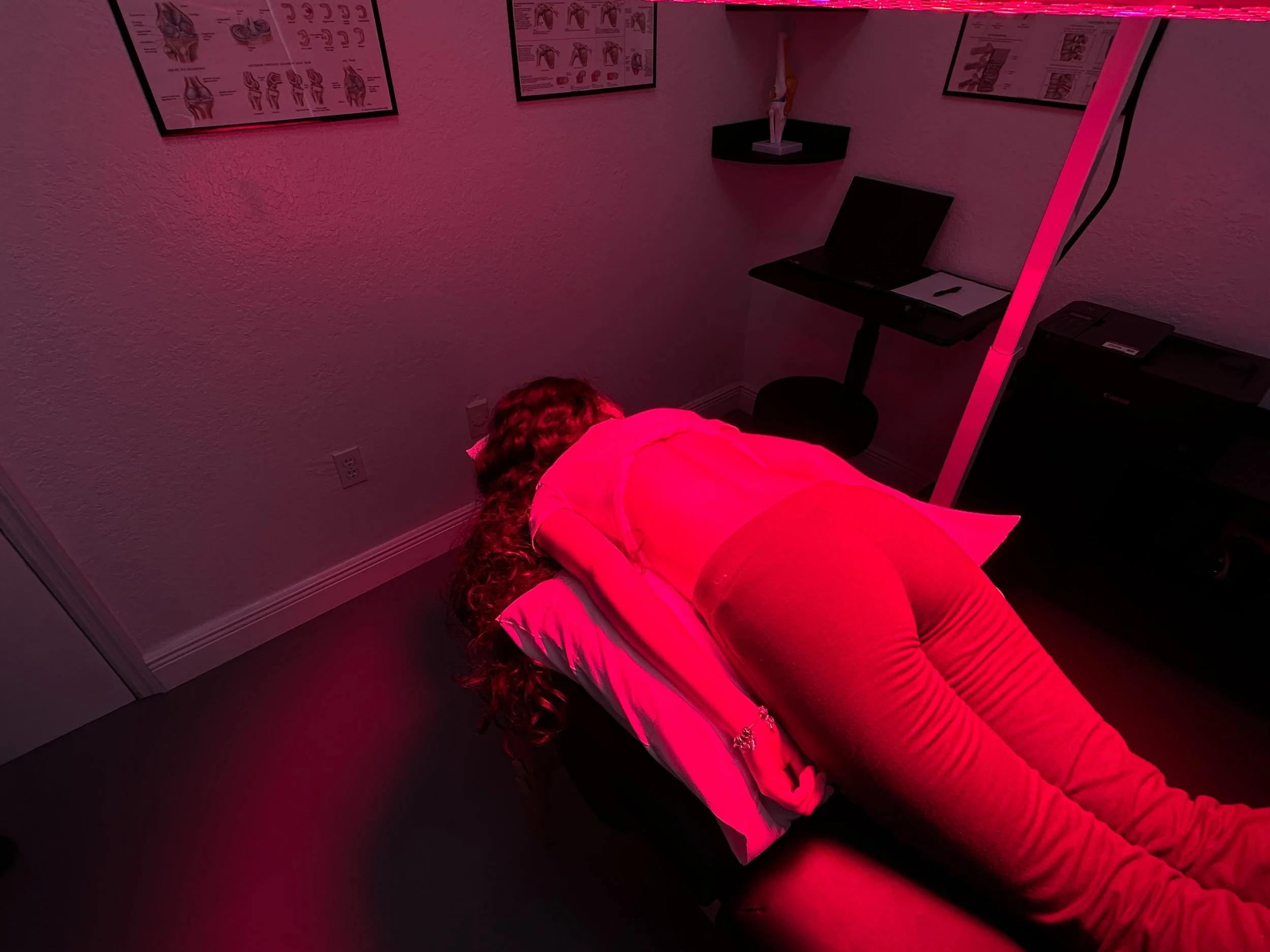
Red Light Therapy
Red light therapy, also known as low-level light therapy (LLLT) or photobiomodulation (PBM), is a non-invasive treatment that uses red or near-infrared light to stimulate various biological processes at the cellular level. The light is typically delivered through LED lights or lasers and is absorbed by the cells, leading to improved cellular function and a range of therapeutic benefits.
What does it do?
The mechanism behind red light therapy lies in the interaction between light and the cells' mitochondria, the powerhouse of the cell. When exposed to red or near-infrared light, the mitochondria absorb photons, which triggers a cascade of cellular responses. One key effect is an increase in cellular efficiency through the production of adenosine triphosphate (ATP), the primary energy currency of cells. This boost in cellular energy has profound implications for various physiological functions. This process stimulates collagen production, improves blood circulation, and reduces inflammation, causing a ripple effect that enhances overall health and contributes to faster healing.
New Age Technology
Here at Physiotough, we use industry-leading PLATINUM LED Red Light Therapy technologies boasting the R+ | NIR+ spectral output featuring the seven wavelengths of 480nm, 630nm, 660nm, 810nm, 830nm, 850nm, and 1060nm.
This spectral output has been perfected for human therapy use by emitting an output closely matching the body's spectral absorption coefficient, maximizing the production of ATP and mitochondrial stimulation.
What does this help with?
Disclaimer: Due to inconclusive research opinions regarding Red Light's impact on current or previous cancerous tissues, Physiotough does not recommend Red Light Therapy at the site of current or prior cancers. However, it is ultimately up to the user's discretion if they wish to partake regardless.
Below, you may read some research articles supporting its possible benefits for cancer:




